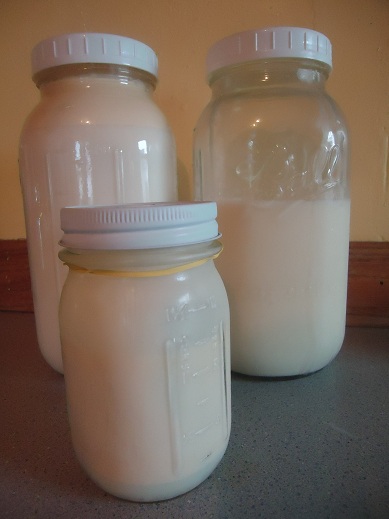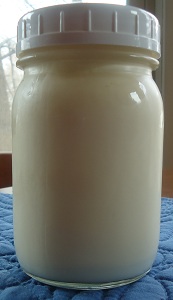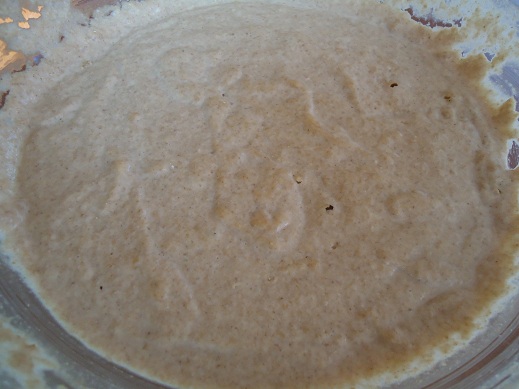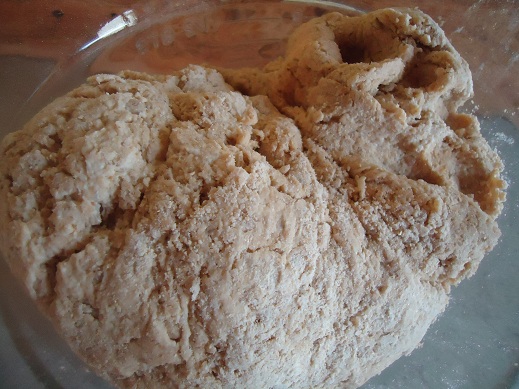It’s great fun to make buttermilk! Wait until you see how easy it is!
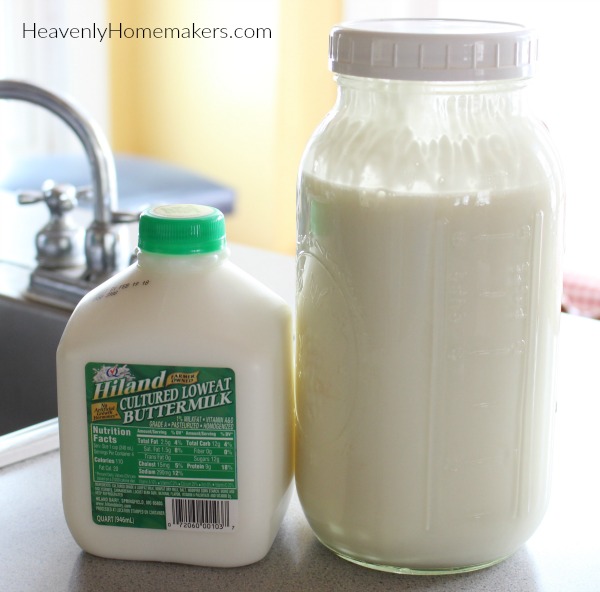
See, this is one of those things you can tell people that will thoroughly impress them, “Oh yes. I make buttermilk. No big deal.” The people will be shocked and amazed, but then you’ll have to admit, “Ok, fine. My two year old actually made the buttermilk. It really is that easy. Still please be impressed.”
Why would you want to make buttermilk?
Well, many recipes call for buttermilk, but as for me, I mostly keep it on hand so I can make this Simple Ranch Dressing. We go through gallons of this dressing as it is our family’s favorite. Seeing as we try to eat salad every day, we must have the ranch dressing in the fridge at all times. Buttermilk is a key, delicious ingredient in this dressing. And since buttermilk is a cultured dairy product, this makes our salad dressing even more nutritious!
The main reason I make buttermilk instead of buying it is because I want to use my farm fresh, raw milk. Raw milk contains nutrients and digestive enzymes that help us break down and absorb those nutrients. So this in and of itself is a win! Then when you add culture to this raw milk, it creates probiotic bacteria that is even more fabulous for our gut health!
So homemade raw cultured buttermilk? This is absolutely filled with great nourishment and digestive benefits!
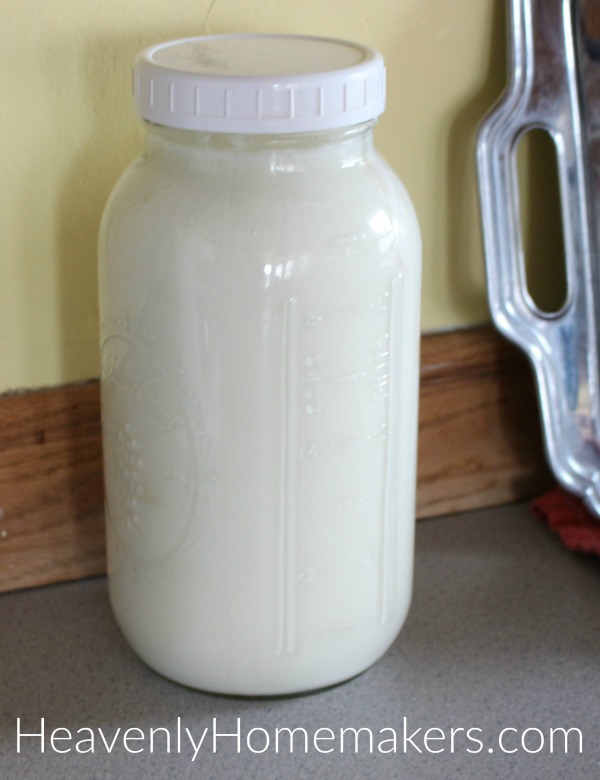
I guess it goes without saying, then, that when I use this Homemade Buttermilk in our Homemade Ranch Dressing, then we pour this wonderful dressing all over our mixed greens, we’ve got ourselves an incredibly nourishing side dish (or main dish, if we add more substance to our salad!).
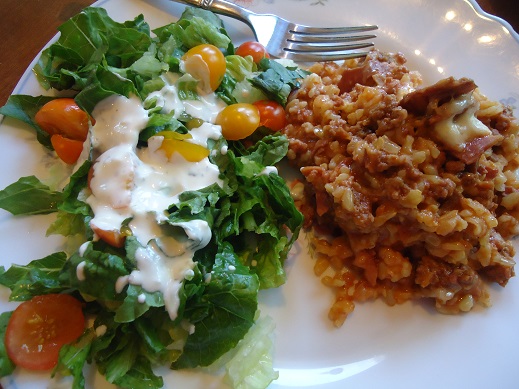
I used to buy packaged culture to start a batch of buttermilk. (Here’s an idea of what that looks like.) That’s a more pure way to start a batch, so yay for that! But it’s quite a bit more expensive. Plus it takes a couple extra steps.
So at this point in my blessed, full-scheduled life, I have chosen the easier route. (Simple specifics below.)
The Best News about Making Buttermilk
Once you have made one batch, you can save the last cup to start a new batch. Then you can continue making batches of buttermilk from your previous batch, over and over again. Isn’t that cool?
The Easiest Way to Make Buttermilk
- Just under ½ gallon of milk
- 1 cup buttermilk
- Add buttermilk to regular milk.
- Shake well.
- Allow milk/buttermilk mixture to sit on the kitchen countertop for 12-36 hours or until the milk has become cultured.
- You will be able to see that the new batch has turned into buttermilk by tilting the jar. If the contents of the jar have thickened and "plop" over when you tilt the jar, your buttermilk has formed! If the mixture is still runny like milk, continue to let the jar sit on the countertop.
- Once the buttermilk has formed, transfer the jar to the fridge, using as needed.
- Save one cup of buttermilk to use in subsequent batches, following the directions above for additional jars of buttermilk.
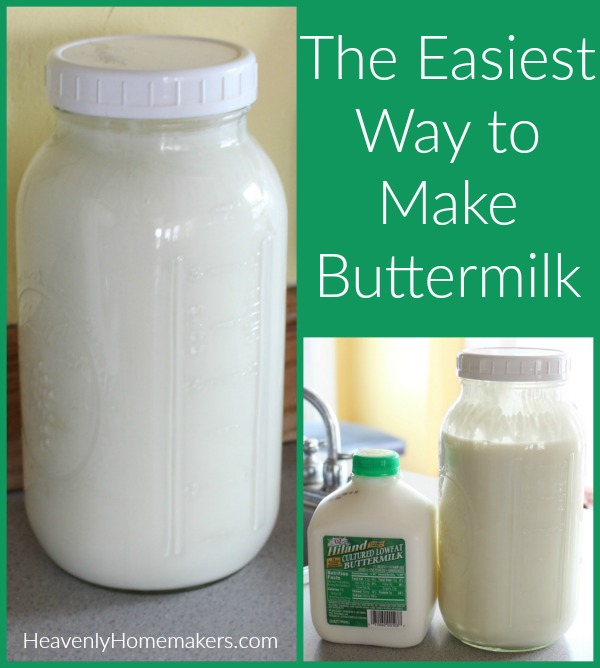
Do not be afraid to leave this at room temperature for several hours! This is how the milk naturally ferments and cultures. Not only is this practice safe, I am quite confident that the probiotic bacteria formed during this process makes for an even safer-to-consume dairy product!
Can you make buttermilk with store-bought, pasteurized milk?
Yes. While I’ve not tried this, research tells me that this method works with pasteurized milk also. Though apparently, using ultra-pasteurized milk will produce inconsistent results. If you’ve had experience with making buttermilk with store-bought milk, I’d love to hear how it has worked for you!
Recipes that use Buttermilk
Here are the recipes I’ve shared here that call for buttermilk:
- Ranch Salad Dressing
- Buttermilk Chocolate Cake
- Pumpkin Donuts
- Giant Breakfast Cookies
- Low Sugar Banana Cake
- Low Sugar Peanut Butter Cake
- Homemade Grapenuts Cereal
- Breakfast Cake Muffins
- Red(less) Velvet Cake
Seems our family enjoys cake made with buttermilk. I mean salad dressing. We eat lots and lots of salad, with dressing that I make with buttermilk. And also cake.
Do you make buttermilk? What do you use buttermilk for at your house?

